For the finale of the Tucson DSL meetup, we headed south, to the Titan Missile Museum. This is exactly what it sounds like: a silo that held a Titan II missile from the early 60s to the early 80s, and which has been converted into a museum.
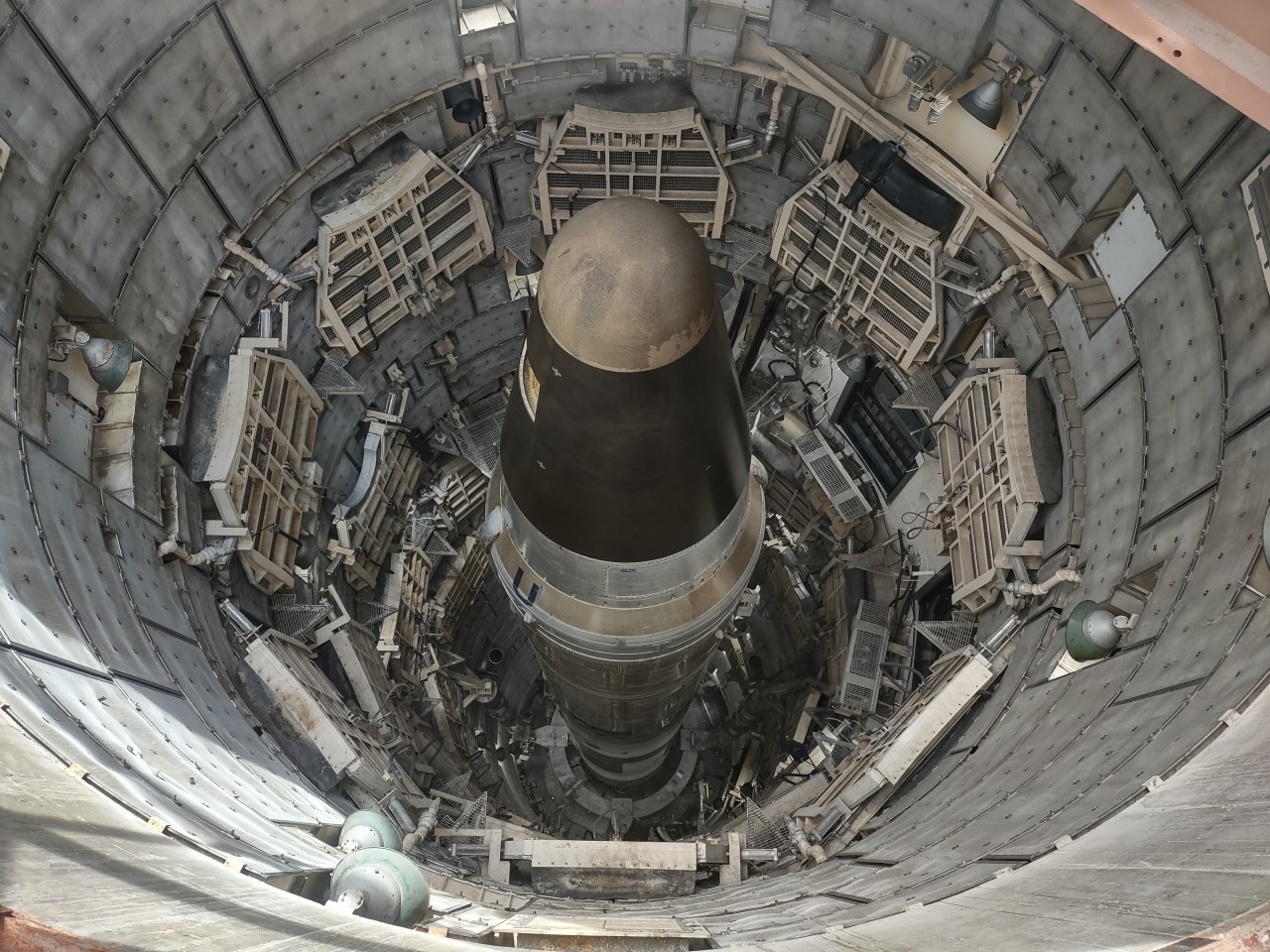
The missile from above1
First, some logistical details: the silo is only accessible on a guided tour, and slots are limited. Same-day availability may be limited, particularly on the weekends. You can still see the gift shop/small museum that has been added to the complex, and they'll sell you a $7 tour of the above-ground section of the museum, but this is absolutely worth the full tour, so book in advance.
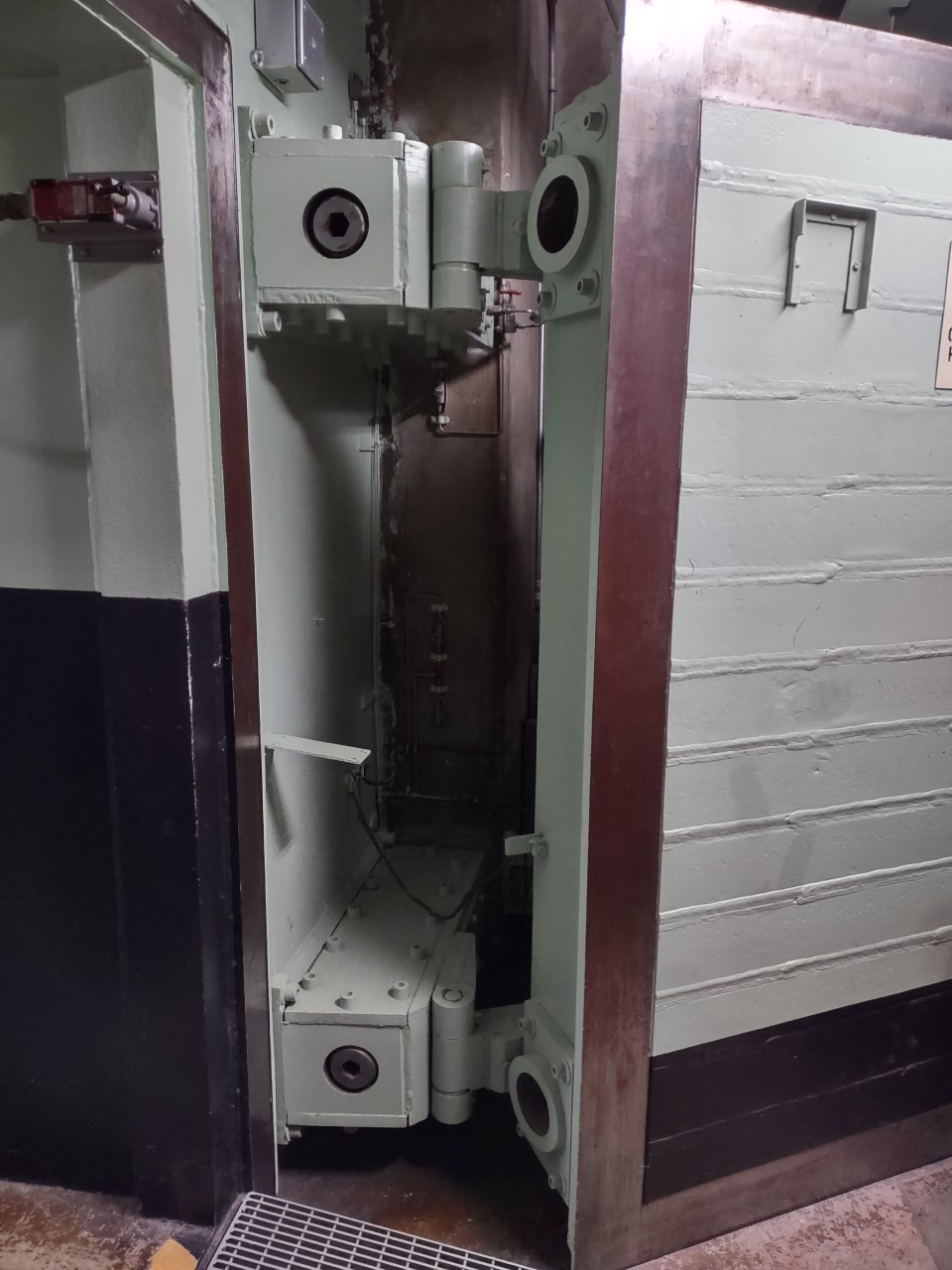
The door into the launch control center
The tour starts with a briefing from the guide, and a short video outlining the Cold War, the American nuclear arsenal, and the mission of the weapon. "Peace through deterrence" is something they hammer home a lot, and rightly so. Our guide was extremely entertaining. He had actually been a missile crewman in the 70s and had a big personality. Unfortunately, this was not matched by any particular commitment to accuracy, and I ended up making a list of things to tell the group afterwards. Several of them said that they particularly enjoyed the real-time fact-check provided by my eyebrows. The biggest issue was a regular exaggeration of the destructiveness of the weapons involved, which as you might expect is a hobbyhorse of mine. In particular, he would give numbers that maybe corresponded to the 1 psi radius of a weapon as "total destruction", which is actually "broken window" levels of damage. Regrettably, I didn't bring my nuclear slide rule, but NukeMap worked just fine for the debrief.
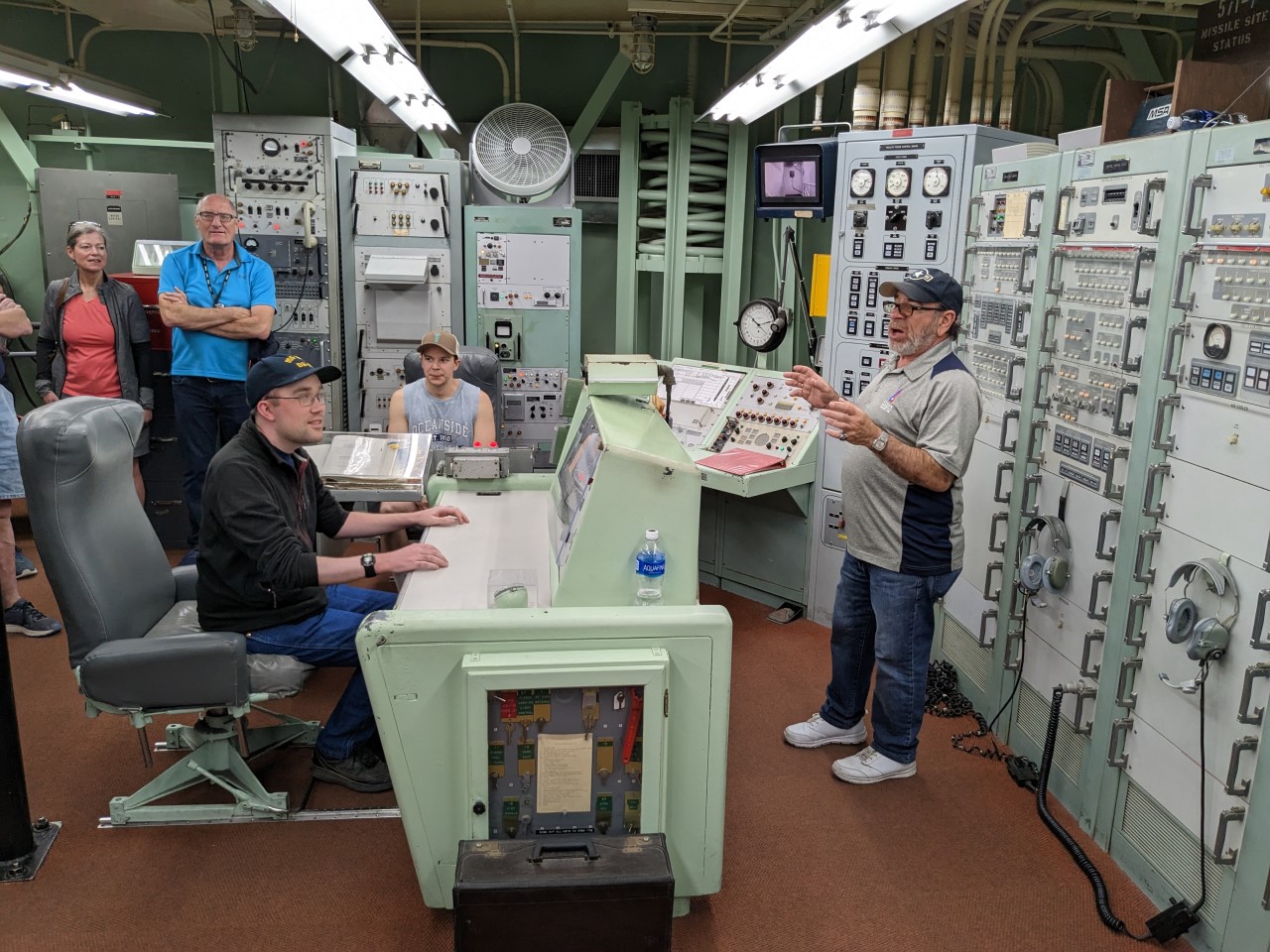
Me sitting at the launch desk2
For the tour itself, you descend down through the main access system and the airlock that they used to enter the complex. Then it's into the main control center, where they requested volunteers. My hand was barely subsonic going up, and I was made the missile commander and a Captain in the Air Force. The guide walked through the day-to-day routine of the missile silo, as well as the procedures they would go through if a launch order came. I got to see the whole thing from the commander's seat, and at the end of the process, the deputy and I turned the keys. It was extremely cool, and I appreciate Cassander letting me do it.
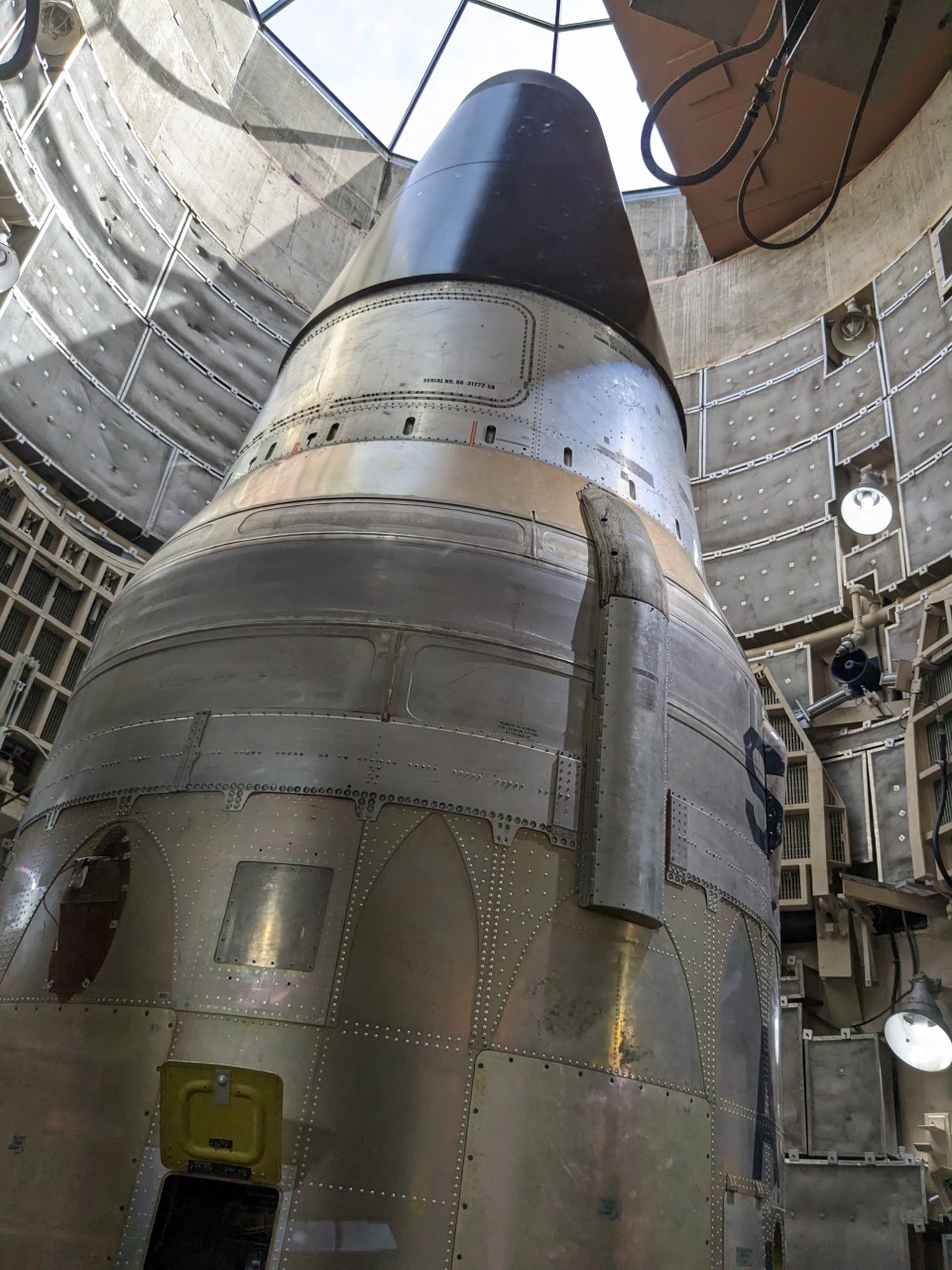
The missile from within the silo
From the launch control center, you head across the cableway to the silo itself, where you can look over at the Titan and get a description of the missile's flight and see pictures of RVs coming in during tests. After that, it's back topside for a description of the antennas, and then you're turned loose to look around the above-ground stuff on your own. The silo itself is half-open, and you can look down all the way to the bottom, which you can't see when down below. There's also a bunch of supporting infrastructure, including trailers for the propellants (thoroughly cleaned, one hopes) and the engines from the missile, which are always fun to see.
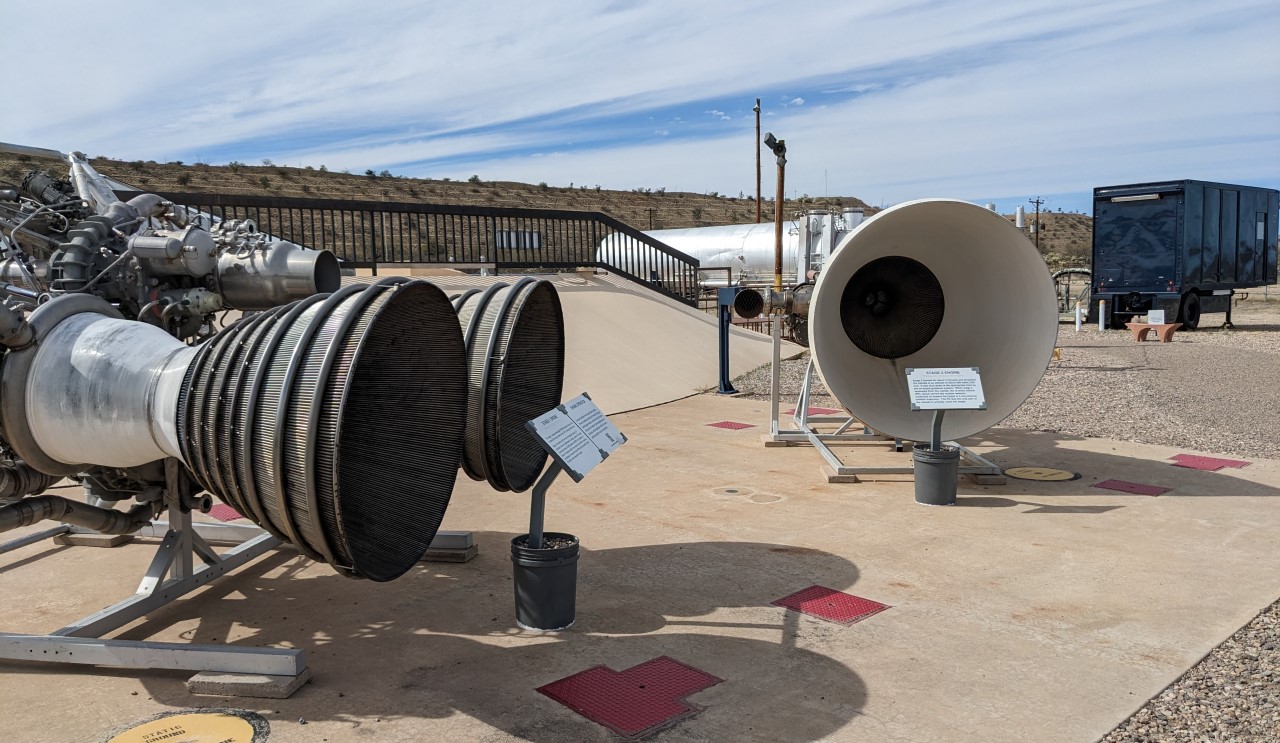
The missile engines topside
On the whole, I had a great time. This is one of two missile silo museums in the country (the other one is a Minuteman silo in South Dakota, and I've been to the outside, but not inside), and it was really cool to see in person the way the Cold War was fought. Eledex, who had been previously, said that their other guides hadn't been missile crews and weren't as entertaining. But even with a worse guide and with someone else turning the key, it would have been well worth a visit.
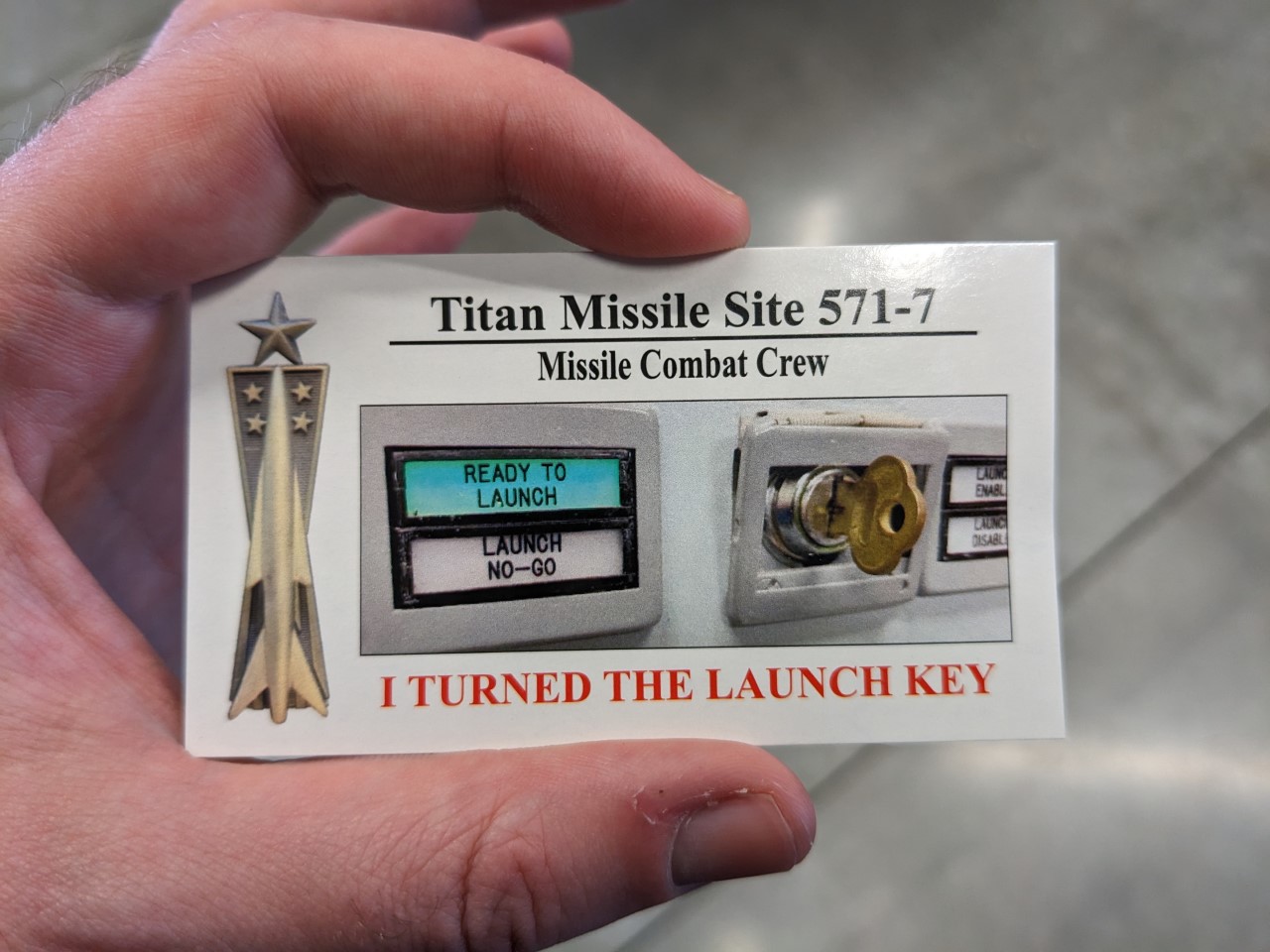
This came with a promotion to Captain in the USAF, but I'm hoping to get a transfer
I will close with some details on the bombs involved and what they can actually be expected to do, courtesy of my nuclear bomb slide rule. The 9 MT W53 on the Titan itself will produce overpressures of 200 psi (potentially serious damage even to heavy reinforced concrete like bunkers) out to just over a mile, and would do 5 psi (destruction of most light buildings like houses) out to 9 miles from an airburst. The 1 psi radius (breaking windows) goes all the way out to 27 miles. On the other side of the spectrum, a ground burst would produce a crater with a radius between .15 miles in dry hard rock and .25 miles in wet soil, and depths of .065 miles and .09 miles respectively. The bigger 20 MT warhead of the (Satan, pull link) has a 200 psi radius of 1.4 miles, a 5 psi radius of 11.5 miles and a 1 psi radius of 36 miles. For cratering, radii are between .175 and .3 miles and depths are between .08 and .11 miles.

Comments
...Have you seen the Nuclear War Simulator from Matrix Games? It's DEFINITELY not what the trailers inferred - it's a much more interactive version of NukeMap with some positively glorious graphics, but once you muscle your way through the learning curve, there's a few gems to be found.
It's on my Steam wishlist, but I saw the reviews and $30 has seemed a bit steep. Might take a chance on it.
@Bean
Granted the guide was probably adding comments to each step of the launch sequence that you were simuating, but how long would it have taken in the real thing from a launch order to the actual turning of the keys?
I imagine the two crewmembers are not always sitting at the desk ready to go, so there must be an allowance for them getting into position.
Seems like a great tour!
Spam alert...
@Neal
It would take about 3 minutes after the launch order was decoded to get ready, and then they would wait for the specific ordered launch time, apparently to deconflict space over the poles. From the point they turned the keys, the missile would be on its way in 58 seconds. Launch order decoding was probably a minute or two.
@muddywaters
I apparently got distracted halfway through dealing with that. The URL he was pushing was already on the block list.
Prepaid for 8 "normal adults" the tour from the copper mine was much longer than advertised. We arrived at 3:07 our tour was scheduled for 3pm. There were 2 more tours scheduled 3:30pm and 4pm. No other people here for those tours. We were denied. We would have to repay to attend the 3:30pm. We didn't. This place sucks.